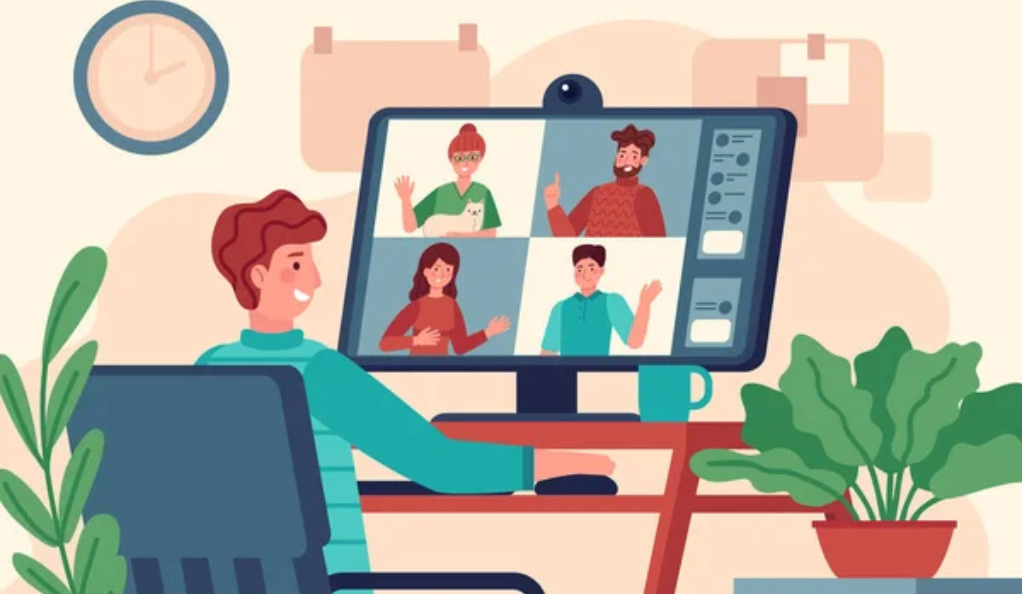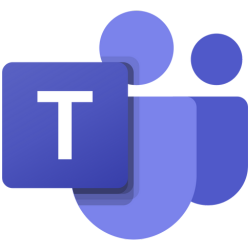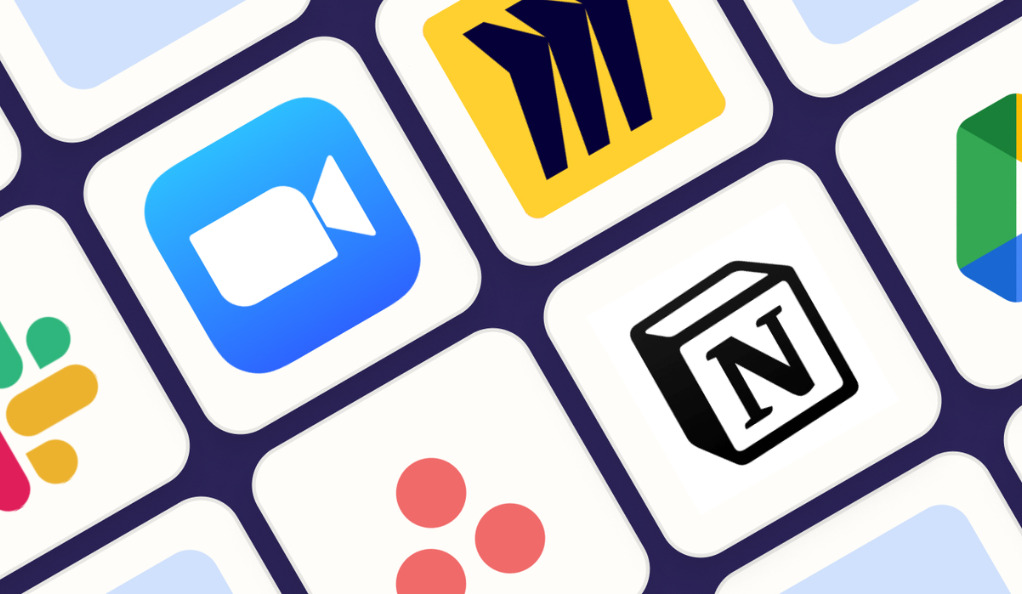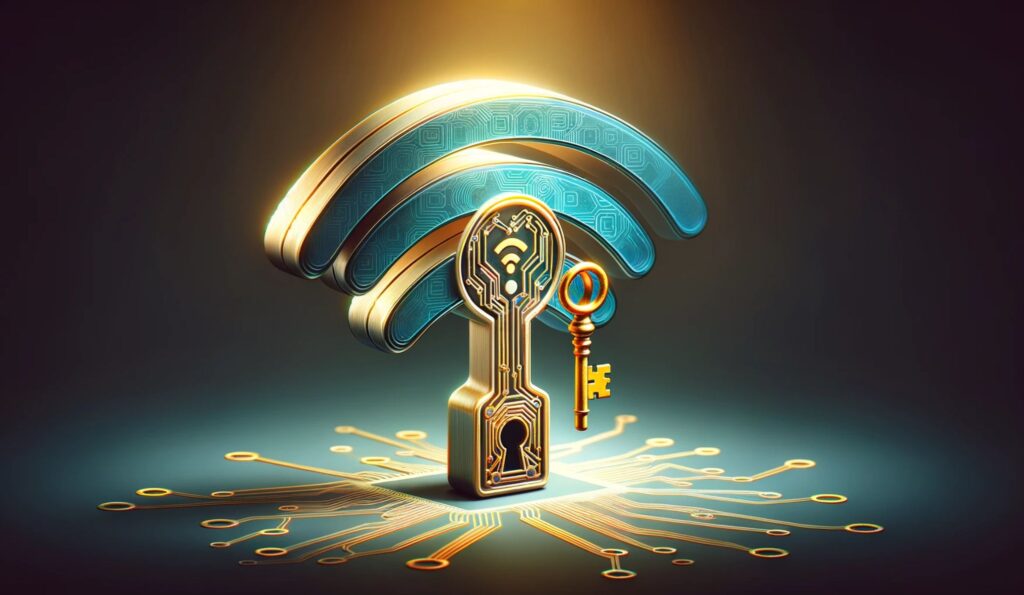Over the past decade, the digital revolution has reshaped the way businesses operate. With the proliferation of high-speed internet, cloud computing, and mobile devices, the traditional office-bound work model began to evolve. This evolution was further accelerated by the COVID-19 pandemic, which forced businesses worldwide to adapt to remote work almost overnight.
Table 1: Growth of Remote Work Over the Years
| Year | Percentage of Global Workforce Working Remotely |
|---|---|
| 2010 | 5% |
| 2015 | 12% |
| 2019 | 16% |
| 2020 | 44% |
| 2021 | 34% |
The Need for Collaboration Tools in a Remote World
With the shift to remote work, the need for effective collaboration tools became paramount. Teams spread across different geographies needed platforms to communicate, share files, manage projects, and maintain productivity. Tools like Slack, Microsoft Teams, Zoom, and Trello became household names, bridging the gap created by physical distance.
However, with this increased reliance on digital tools came a new set of challenges.
The Importance of Security in Today’s Digital Workspace
In the digital age, data is the new currency. As businesses moved their operations online, the volume of data being shared and stored on digital platforms skyrocketed. This transition brought forth a plethora of security challenges:
- Data Breaches: Unauthorized access to confidential company data.
- Phishing Attacks: Deceptive attempts to obtain sensitive information.
- Ransomware: Malicious software that encrypts a victim’s files, demanding payment to restore access.
Security Features of Popular Collaboration Tools
| Collaboration Tool | End-to-End Encryption | Two-Factor Authentication | Data Backup | User Access Control |
|---|---|---|---|---|
| Slack | Yes | Yes | Yes | Yes |
| Microsoft Teams | Yes | Yes | Yes | Yes |
| Zoom | No | Yes | Yes | Yes |
| Trello | No | Yes | Yes | Yes |
The Shift to Remote Work: A Security Challenge
The Unprecedented Push: COVID-19 and Remote Work
The onset of the COVID-19 pandemic in early 2020 brought about a seismic shift in the global work landscape. As countries went into lockdown and businesses shuttered their physical offices, there was an immediate need to ensure business continuity. This urgency led to the rapid adoption of remote work models, with companies scrambling to equip their employees with the tools and resources needed to work from home.

Increase in Remote Work Adoption During COVID-19
| Month | Percentage of Businesses Adopting Remote Work |
|---|---|
| January | 5% |
| March | 25% |
| May | 60% |
| July | 70% |
Collaboration Tools: The New Office Infrastructure
To facilitate this new work model, businesses turned to collaboration tools. Platforms like Zoom saw a meteoric rise in users, with daily meeting participants skyrocketing from 10 million in December 2019 to over 300 million in April 2020. Similarly, tools like Microsoft Teams, Slack, and Google Meet became essential components of the remote work toolkit.
However, this rapid adoption came with its own set of challenges.
Security Concerns in the Age of Remote Work
The swift transition to remote work exposed several security vulnerabilities:
- Unsecured Home Networks: Unlike office networks, which often have robust security protocols, home networks can be more susceptible to attacks.
- Use of Personal Devices: Many employees used personal devices for work, which might not have the same security measures as company-provided equipment.
- Phishing and Scams: Cybercriminals exploited the pandemic, launching COVID-19 themed phishing campaigns and scams.
Security Incidents During COVID-19
| Incident Type | Number of Reported Cases (2020) |
|---|---|
| Phishing Attacks | 1,200,000 |
| Ransomware Attacks | 300,000 |
| Data Breaches | 500,000 |
The comparison table highlights the surge in security incidents during the pandemic. The rapid shift to remote work, combined with the heightened emotions of the global crisis, created an environment ripe for cyberattacks.
Microsoft Teams: The All-Rounder
A Comprehensive Collaboration Suite: Overview of Microsoft Teams

In the realm of collaboration tools, Microsoft Teams has emerged as a comprehensive solution, catering to a myriad of business communication needs. Launched in 2017 as part of the Office 365 suite, Teams seamlessly integrates chat, video conferencing, file storage, and application integration into a single platform. Its intuitive interface and deep integration with other Microsoft products have made it a go-to choice for businesses of all sizes.
Table 1: Core Features of Microsoft Teams
| Feature Category | Specific Features |
|---|---|
| Communication | Chat, Voice & Video Calls, Meetings |
| Collaboration | File Sharing, Co-authoring, Live Collaboration |
| Integration | Office 365 apps, Third-party apps & services |
| Customization | Tabs, Bots, Extensions |
Table 1 provides a snapshot of the diverse features that Microsoft Teams offers, making it a versatile tool for various business needs.
Prioritizing Security: Microsoft Teams’ Protocols and Certifications
Microsoft, understanding the critical importance of data security, especially in a collaboration tool, has equipped Teams with a robust set of security measures. These protocols ensure that data is protected, access is controlled, and compliance standards are met.
- Data Protection: Microsoft Teams benefits from the advanced security features of Office 365. Data is encrypted both in transit and at rest. Files shared in Teams are stored in SharePoint and are backed by SharePoint encryption. Conversations are secured by encrypting the data between the Teams client and the server.
- Access Control: Teams employs two-factor authentication, single sign-on through Active Directory, and secure guest access to ensure that only authorized individuals can access the data.
- Compliance Certifications: Microsoft Teams is compliant with a range of global, regional, and industry-specific regulations. Some of its certifications include:
- ISO 27001
- ISO 27018
- SSAE16 SOC 1 and SOC 2
- HIPAA
- EU Model Clauses (EUMC)
Table 2: Microsoft Teams Security Certifications
| Certification | Description |
|---|---|
| ISO 27001 | International standard for managing information security |
| ISO 27018 | Protection of personal data in the cloud |
| HIPAA | Compliance for health information |
| SSAE16 SOC 1 | Reporting on controls at a service organization related to user entities |
| SSAE16 SOC 2 | Reporting on controls at a service organization relevant to security, etc. |
Table 2 provides a brief description of some of the key security certifications that Microsoft Teams holds.
Slack: The Communication Hub
The Rise of Slack: A Modern Communication Powerhouse

In the bustling arena of workplace communication tools, Slack has carved a niche for itself as a dynamic and user-friendly platform. Launched in 2013, Slack transformed the way teams communicate, offering a refreshing departure from traditional email chains. Its channel-based messaging system, coupled with a sleek interface, quickly gained traction, making it a favorite among startups, tech companies, and even large enterprises.
Table 1: Slack’s Growth Over the Years
| Year | Number of Active Daily Users (in millions) |
|---|---|
| 2015 | 1.1 |
| 2017 | 5 |
| 2019 | 12 |
| 2021 | 15 |
Table 1 showcases Slack’s impressive growth trajectory, highlighting its increasing popularity among businesses.
Seamless Integration: Slack’s Superpower
One of Slack’s standout features is its vast integration capabilities. Beyond simple messaging, Slack acts as a hub where teams can integrate a plethora of third-party apps and services, streamlining workflows and reducing the need to switch between different platforms.
- App Directory: Slack boasts an extensive app directory, with over 2,000 integrations ranging from productivity tools like Trello and Asana to developer platforms like GitHub and Jira.
- Custom Integrations: For businesses with unique needs, Slack offers the ability to create custom integrations, ensuring that their specific tools and services can be accessed directly within the Slack workspace.
Prioritizing Security: Slack’s Commitment to Data Protection
Understanding the critical nature of workplace communication, Slack has invested heavily in ensuring that its platform is secure and trustworthy. From data encryption to compliance certifications, Slack’s security features are designed to protect businesses at every level.
- Data Encryption: Slack encrypts data both in transit and at rest, using advanced encryption standards. All data moving between Slack clients and Slack servers is encrypted using TLS (Transport Layer Security).
- Enterprise-Level Protection: Slack offers an enterprise version, Slack Enterprise Grid, which provides additional security features such as enterprise mobility management (EMM) support, data loss prevention (DLP), and more.
- Compliance Certifications: Slack holds various compliance certifications, ensuring that businesses from regulated industries can use the platform with confidence. Some of these certifications include:
- GDPR
- HIPAA (for Enterprise Grid customers)
- ISO/IEC 27001
Table 2: Slack’s Key Security Certifications
| Certification | Description |
|---|---|
| GDPR | Compliance with EU’s General Data Protection Regulation |
| HIPAA | Compliance for health information |
| ISO/IEC 27001 | International standard for managing information security |
Table 2 provides an overview of some of the primary security certifications held by Slack.
Google Drive: Cloud Storage with Security
The Evolution of Google Drive: Beyond Simple Storage

Since its launch in 2012, Google Drive has evolved from a simple cloud storage solution to an integral part of the broader G Suite ecosystem. Today, it’s not just a place to store files but a collaborative workspace where users can create, share, and edit documents in real-time, all within the cloud.
Table 1: Google Drive’s User Growth Over the Years
| Year | Number of Active Users (in billions) |
|---|---|
| 2013 | 0.12 |
| 2015 | 0.8 |
| 2018 | 1 |
| 2021 | 1.5 |
Table 1 illustrates the consistent growth in Google Drive’s user base, reflecting its widespread adoption across personal and professional spheres.
Seamless Integration with G Suite Apps
One of the standout features of Google Drive is its seamless integration with other G Suite applications, providing users with a cohesive and efficient workspace.
- Docs, Sheets, and Slides: Users can create documents, spreadsheets, and presentations directly within Drive, enabling real-time collaboration with team members.
- Forms and Drawings: Beyond the primary office tools, Drive integrates with Google Forms for surveys and Google Drawings for basic graphic design, enhancing its utility for diverse tasks.
- Shared Drives: For businesses and teams, Shared Drives offer a space where teams can store, search, and access files from any device, ensuring everyone sees the same content.
Prioritizing User Protection: Google Drive’s Security Measures
In the digital age, where data breaches and cyber threats are ever-present, Google Drive has prioritized robust security measures to ensure user data remains protected.
- Data Encryption: Google Drive encrypts user data both when it’s in transit between the user’s device and Google servers and when it’s at rest on the servers. The platform uses advanced encryption standards, such as TLS (Transport Layer Security), to safeguard data.
- Two-Factor Authentication (2FA): Google offers 2FA for all its services, including Drive. This adds an extra layer of security by requiring users to verify their identity using a second method, beyond just a password.
- Safe Sharing: Google Drive provides detailed sharing settings, allowing users to decide who can view, edit, or comment on their files. Shared links can also be set to expire after a certain period, ensuring temporary access.
- Virus Scanning: Before downloading a file, Drive checks it for viruses, alerting the user if anything suspicious is detected.
Table 2: Google Drive’s Security Features Overview
| Feature | Description |
|---|---|
| Encryption | Data encryption both in transit and at rest |
| Two-Factor Authentication | Additional security layer requiring two methods of identity verification |
| Safe Sharing | Detailed file sharing settings with expiration options |
| Virus Scanning | Pre-download scanning of files for potential threats |
Table 2 provides a concise overview of the primary security features embedded within Google Drive.
Basecamp: Project Management with a Security Focus
Basecamp’s Rise: Streamlining Remote Collaboration and Project Management

In the domain of project management tools, Basecamp has long stood as a beacon of simplicity and efficiency. Launched in 2004, Basecamp was one of the pioneers in offering a cloud-based solution for teams to collaborate, organize tasks, and manage projects. Its user-friendly interface, combined with a suite of powerful features, has made it a preferred choice for businesses ranging from small startups to large corporations.
Table 1: Basecamp’s Evolution Over the Years
| Year | Major Updates & Features Introduced |
|---|---|
| 2004 | Launch of Basecamp Classic |
| 2012 | Basecamp 2 with improved UI and calendar feature |
| 2015 | Introduction of Basecamp 3 with chat tools and client access |
| 2019 | Introduction of Hill Charts for project tracking |
| 2021 | Enhanced to-do lists and scheduling features |
Table 1 traces the significant milestones in Basecamp’s journey, showcasing its commitment to innovation and user needs.
Empowering Teams: Basecamp’s Features for Remote Collaboration and Project Management
Basecamp’s strength lies in its comprehensive suite of tools designed to facilitate seamless collaboration and efficient project management:
- To-Do Lists: Organize tasks, assign them to team members, set due dates, and track progress.
- Message Boards: Keep team communication transparent and organized, reducing the reliance on endless email threads.
- Schedules: A shared calendar feature to keep track of important dates, milestones, and events.
- Docs & Files: Centralized storage for project-related documents, images, and files, ensuring everyone has access to the latest versions.
- Real-time Group Chat (Campfires): For quick discussions, brainstorming sessions, or casual chats.
- Hill Charts: A unique feature to visualize the progress of a project, helping teams understand what’s known, unknown, and the way forward.
A Bastion of Security: Basecamp’s Protocols and Data Protection
Recognizing the critical importance of data security, especially in a tool that houses crucial project information, Basecamp has implemented a robust set of security measures:
- Data Encryption: Basecamp ensures that all data, whether in transit between the user’s device and servers or at rest, is encrypted using industry-standard protocols.
- Regular Audits: Basecamp undergoes third-party security audits and vulnerability assessments to ensure its defenses are always up to the mark.
- Two-Factor Authentication (2FA): An added layer of security, 2FA requires users to provide two forms of identification before accessing their account.
- Data Backups: Basecamp maintains regular backups of all data, ensuring that in the event of any unforeseen circumstances, user data can be restored with minimal disruption.
- Privacy Commitment: Basecamp has a clear privacy policy, ensuring user data is never sold or misused. They also comply with global data protection regulations, including GDPR.
Table 2: Basecamp’s Security and Data Protection Features
| Feature | Description |
|---|---|
| Data Encryption | Protection of data both in transit and at rest |
| Regular Security Audits | Third-party assessments to ensure robust security |
| Two-Factor Authentication | Enhanced security requiring dual identification methods |
| Data Backups | Regular backups to safeguard user data |
| Privacy Commitment | Assurance of data privacy and compliance with global regulations |
Table 2 offers a concise overview of the primary security and data protection features integrated into Basecamp.
Zoom: Video Conferencing with Lessons in Security
Zoom’s Meteoric Rise: The Go-To Video Conferencing Solution

In the realm of video conferencing, few platforms have experienced a rise as meteoric as Zoom. Founded in 2011, Zoom was designed to make video communication frictionless and reliable. However, it was the COVID-19 pandemic that catapulted Zoom from a business tool to a household name. As the world grappled with lockdowns and social distancing, Zoom became the platform of choice for everything from business meetings and virtual classrooms to family gatherings and social events.
Table 1: Zoom’s User Growth During the Pandemic
| Month | Daily Meeting Participants (in millions) |
|---|---|
| January 2020 | 10 |
| April 2020 | 300 |
| December 2020 | 350 |
Table 1 highlights the exponential growth in Zoom’s daily meeting participants during the pandemic, showcasing its widespread adoption.
A Feature-Rich Platform: Zoom’s Offerings
Zoom’s popularity can be attributed not just to its timely relevance but also to its comprehensive set of features:
- HD Video and Audio: High-quality video and audio ensure clear communication, even with large groups.
- Virtual Backgrounds: Users can replace their real background with an image or video, adding a touch of professionalism or fun to meetings.
- Breakout Rooms: For larger meetings or webinars, participants can be divided into smaller groups for focused discussions.
- Screen Sharing and Whiteboarding: Facilitates collaborative discussions, presentations, and brainstorming sessions.
- Recording: Meetings can be recorded locally or to the cloud, ensuring no detail is missed.
- Webinar Capabilities: Beyond regular meetings, Zoom offers features tailored for webinars, including registration, Q&A, and polling.
Navigating Turbulence: Zoom’s Security Challenges and Responses
As Zoom’s popularity surged, it found itself under the microscope, with several security vulnerabilities coming to light:
- Zoombombing: Unauthorized users gained access to meetings, causing disruptions. This was primarily due to users sharing meeting links publicly and not using passwords.
- Encryption Concerns: It was revealed that Zoom’s claim of using end-to-end encryption was not accurate, leading to concerns about data privacy.
- Data Routing Issues: Concerns were raised about Zoom calls being routed through servers in China, leading to potential data privacy issues.
Recognizing the gravity of these challenges, Zoom was swift in its response:
- 90-Day Security Plan: Zoom initiated a 90-day plan focused solely on addressing security and privacy concerns. This included freezing feature updates to prioritize security enhancements.
- Enhanced Encryption: Zoom rolled out enhanced encryption protocols and clarified its encryption practices.
- Security Features: New features, such as waiting rooms, were introduced, and meeting passwords were made default to prevent unauthorized access.
- Transparency: Zoom committed to being more transparent about its operations, including routing of data and its encryption practices.
Table 2: Zoom’s Security Challenges and Responses
| Challenge | Zoom’s Response |
|---|---|
| Zoombombing | Introduced waiting rooms and made meeting passwords default |
| Encryption Concerns | Enhanced encryption protocols and clarified encryption practices |
| Data Routing | Provided users with more control over which data centers their meetings are routed through |
Table 2 offers a concise overview of the primary security challenges faced by Zoom and the company’s subsequent responses.
The Importance of End-to-End Encryption
The Digital Age’s Shield: Understanding End-to-End Encryption
In an era where data breaches and cyber-espionage are not just risks but daily occurrences, the importance of end-to-end encryption (E2EE) cannot be overstated. E2EE is a method of secure communication that prevents third-parties from accessing data while it’s transferred from one end system to another. In simpler terms, only the sender and the recipient can decipher the message, ensuring that intermediaries—be it cybercriminals, internet providers, or even the service providers themselves—cannot decrypt the content.
Why Encryption Matters in Collaboration Tools
Collaboration tools, by their very nature, deal with a vast amount of data—much of it sensitive. Whether it’s a business strategy discussion on Zoom, a shared financial document on Google Drive, or a project plan on Basecamp, the data exchanged is often confidential.
- Data Protection: E2EE ensures that even if data is intercepted during transmission, it remains unreadable to unauthorized entities.
- User Privacy: For personal communications, E2EE safeguards user privacy, ensuring that personal conversations, images, or videos remain private.
- Regulatory Compliance: Many industries have strict regulations about data protection (e.g., GDPR, HIPAA). E2EE helps businesses comply with these regulations by ensuring data in transit remains secure.
- Building Trust: Knowing that a collaboration tool uses E2EE can enhance trust among its users, reassuring them that their data is protected.
Collaboration Tools Prioritizing End-to-End Encryption
Several collaboration tools have recognized the importance of E2EE and have integrated it into their platforms:
- WhatsApp: One of the first major platforms to implement E2EE by default for all its users, ensuring that messages, calls, photos, and videos are encrypted.
- Signal: A messaging app that prioritizes security and privacy, Signal has always been at the forefront of E2EE, ensuring that all communications on the platform are encrypted.
- Wire: A collaboration platform that offers messaging, voice, video, and file sharing, all under the protection of E2EE.
- Tresorit: A cloud storage solution that uses E2EE to ensure that files and documents remain secure, both in transit and at rest.
Table 1: Collaboration Tools with End-to-End Encryption
| Tool | Features Covered by E2EE |
|---|---|
| Messages, Calls, Photos, Videos | |
| Signal | Messages, Calls |
| Wire | Messages, Voice, Video, File Sharing |
| Tresorit | File Storage and Sharing |
Table 1 provides a snapshot of some popular collaboration tools that have integrated E2EE into their platforms, showcasing the features they protect.
The Importance of End-to-End Encryption
The Digital Age’s Shield: Understanding End-to-End Encryption
In an era where data breaches and cyber-espionage are not just risks but daily occurrences, the importance of end-to-end encryption (E2EE) cannot be overstated. E2EE is a method of secure communication that prevents third-parties from accessing data while it’s transferred from one end system to another. In simpler terms, only the sender and the recipient can decipher the message, ensuring that intermediaries—be it cybercriminals, internet providers, or even the service providers themselves—cannot decrypt the content.
Why Encryption Matters in Collaboration Tools
Collaboration tools, by their very nature, deal with a vast amount of data—much of it sensitive. Whether it’s a business strategy discussion on Zoom, a shared financial document on Google Drive, or a project plan on Basecamp, the data exchanged is often confidential.
- Data Protection: E2EE ensures that even if data is intercepted during transmission, it remains unreadable to unauthorized entities.
- User Privacy: For personal communications, E2EE safeguards user privacy, ensuring that personal conversations, images, or videos remain private.
- Regulatory Compliance: Many industries have strict regulations about data protection (e.g., GDPR, HIPAA). E2EE helps businesses comply with these regulations by ensuring data in transit remains secure.
- Building Trust: Knowing that a collaboration tool uses E2EE can enhance trust among its users, reassuring them that their data is protected.
Collaboration Tools Prioritizing End-to-End Encryption
Several collaboration tools have recognized the importance of E2EE and have integrated it into their platforms:
- WhatsApp: One of the first major platforms to implement E2EE by default for all its users, ensuring that messages, calls, photos, and videos are encrypted.
- Signal: A messaging app that prioritizes security and privacy, Signal has always been at the forefront of E2EE, ensuring that all communications on the platform are encrypted.
- Wire: A collaboration platform that offers messaging, voice, video, and file sharing, all under the protection of E2EE.
- Tresorit: A cloud storage solution that uses E2EE to ensure that files and documents remain secure, both in transit and at rest.
Table 1: Collaboration Tools with End-to-End Encryption
| Tool | Features Covered by E2EE |
|---|---|
| Messages, Calls, Photos, Videos | |
| Signal | Messages, Calls |
| Wire | Messages, Voice, Video, File Sharing |
| Tresorit | File Storage and Sharing |
Table 1 provides a snapshot of some popular collaboration tools that have integrated E2EE into their platforms, showcasing the features they protect.
Conclusion
In today’s fast-paced, digitally-driven world, collaboration tools have transitioned from being mere conveniences to fundamental pillars of the modern workspace. The traditional boundaries of offices have expanded, transcending physical spaces and time zones. As teams become more dispersed, the need for real-time communication, seamless collaboration, and efficient project management has skyrocketed.
Collaboration tools, from video conferencing platforms like Zoom to project management suites like Basecamp, have stepped in to bridge this gap. They’ve enabled teams to maintain productivity, foster innovation, and ensure continuity, even in the face of unprecedented challenges like the global pandemic. In essence, these tools have redefined the very fabric of ‘work’, making it more flexible, inclusive, and adaptive.








